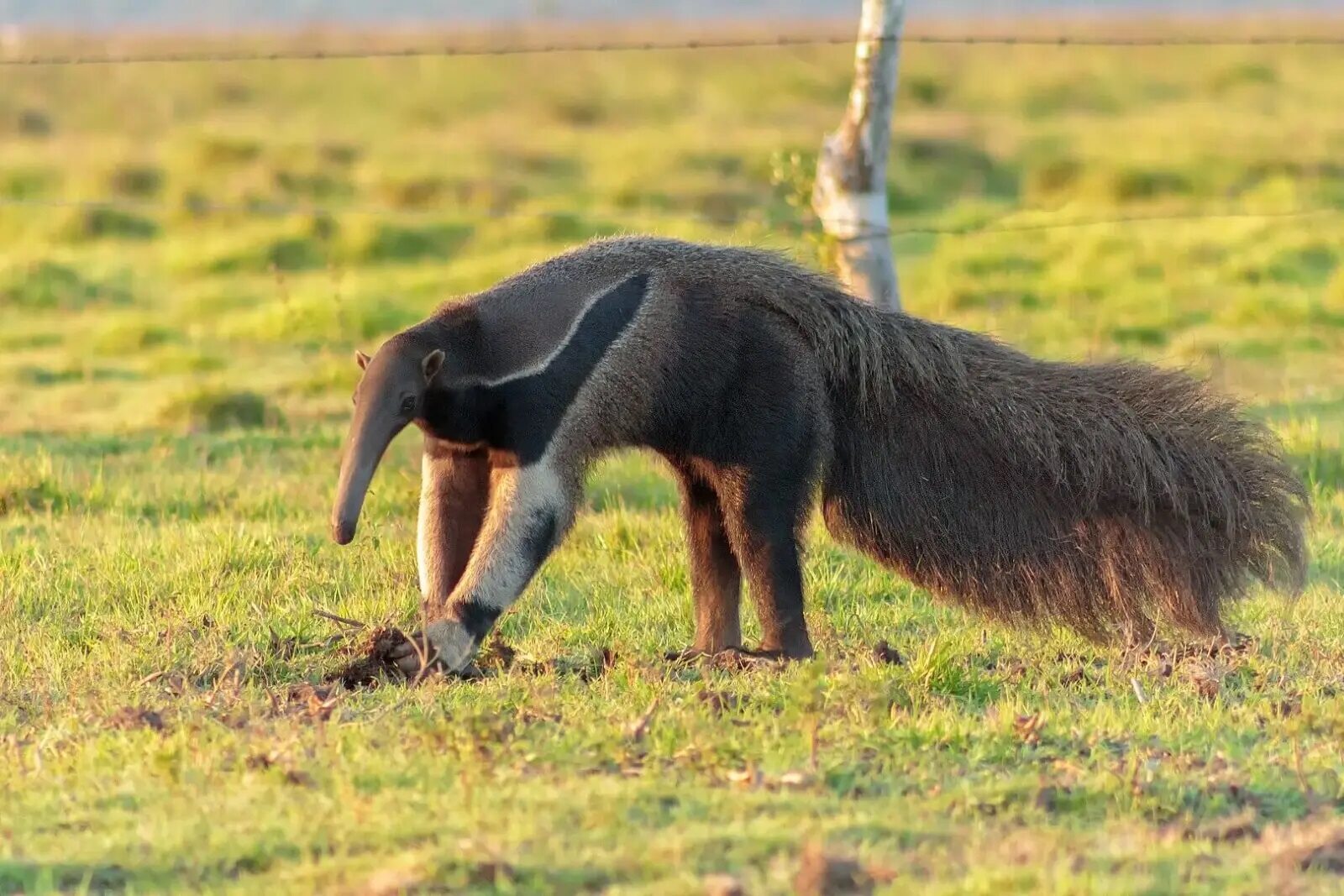
Anteaters are fascinating creatures that captivate the imagination with their unique appearance and specialized diet. These remarkable animals are known for their long snouts, impressive claws, and insatiable appetite for ants and termites. In the wild, anteaters are a sight to behold as they skillfully sniff out and consume thousands of insects each day. Their distinctive features and intriguing behaviors make them a subject of curiosity and admiration among nature enthusiasts and animal lovers.
In this article, we will delve into the captivating world of anteaters and uncover 13 amazing facts that shed light on their remarkable adaptations, behavior, and ecological significance. From their incredible sense of smell to their surprising parenting habits, there's a wealth of intriguing information to discover about these extraordinary creatures. So, let's embark on a journey of exploration and unravel the mysteries of the fascinating anteaters.
Key Takeaways:
- Anteaters are fascinating insectivores with long tongues and sharp claws, but no teeth. They are nocturnal, solitary, and endangered, playing a vital role in controlling insect populations and captivating human imagination for centuries.
- Anteaters are unique creatures native to Central and South America, known for their slow reproductive rate and excellent swimming skills. They are protected by legislation and are crucial for maintaining the ecological balance in their habitats.
Anteaters Are Excellent Insectivores
Anteaters possess a specialized tongue that can flick in and out of their mouths up to 150 times per minute, enabling them to consume a vast number of ants and termites.
Anteaters Have Long, Sharp Claws
Equipped with formidable claws, anteaters use their powerful limbs to tear open insect mounds and termite nests, allowing them to access their primary food source.
Anteaters Are Nocturnal Creatures
These remarkable animals are primarily active during the night, utilizing their keen sense of smell to locate and consume insects under the cover of darkness.
Anteaters Lack Teeth
In a surprising twist, anteaters have no teeth. Instead, they rely on their long, sticky tongues to extract insects from their habitats, demonstrating their remarkable adaptability.
Anteaters Are Excellent Swimmers
Despite their terrestrial nature, anteaters are proficient swimmers and can navigate water bodies with ease, showcasing their versatility in various environments.
Anteaters Have Poor Eyesight
While anteaters excel in other sensory faculties, their eyesight is relatively poor, emphasizing their reliance on smell and hearing to compensate for this limitation.
Anteaters Are Solitary Animals
These creatures typically lead solitary lives, coming together only during the mating season, after which they resume their independent lifestyles.
Anteaters Have a Slow Reproductive Rate
Anteaters have a notably slow reproductive rate, with females giving birth to a single offspring after a gestation period of six months, highlighting the challenges they face in sustaining their populations.
Anteaters Are Native to Central and South America
These captivating animals are indigenous to the lush habitats of Central and South America, where they play a crucial role in maintaining the ecological balance.
Anteaters Are Endangered Species
Due to habitat loss and human encroachment, anteaters face significant threats, leading to their classification as endangered species, underscoring the importance of conservation efforts.
Anteaters Are Vital for Ecosystem Health
Anteaters play a pivotal role in controlling insect populations, contributing to the overall health and stability of their ecosystems through their insectivorous habits.
Anteaters Are Protected by Legislation
Recognizing the need to safeguard these remarkable creatures, various laws and conservation initiatives have been established to protect anteaters and their natural habitats.
Anteaters Have Captivated Human Imagination for Centuries
Throughout history, anteaters have captured the fascination of humans, inspiring art, literature, and cultural representations that celebrate their enigmatic nature.
Anteaters are truly remarkable animals, boasting a range of extraordinary traits and behaviors that make them a source of wonder and admiration for nature enthusiasts worldwide. Their unique adaptations and ecological significance underscore the importance of preserving their habitats and ensuring their continued existence for future generations to appreciate and cherish.
Conclusion
In conclusion, the anteater is a fascinating and unique creature with a range of remarkable adaptations that make it perfectly suited for its specialized diet of ants and termites. From its elongated snout to its impressive tongue, the anteater's physical features are marvels of evolution. Its solitary nature and nocturnal habits add to the air of mystery that surrounds this intriguing animal. As we continue to learn more about the anteater, we gain a deeper appreciation for the diversity of life on our planet and the incredible ways in which animals have adapted to their environments.
FAQs
What is the scientific name for the anteater?
The scientific name for the anteater is Myrmecophaga tridactyla. This name is derived from Greek words, with "myrmex" meaning ant and "phagein" meaning to eat, highlighting the anteater's diet.
How long is an anteater's tongue?
An anteater's tongue can extend up to 2 feet in length, allowing it to reach deep into ant and termite mounds to extract its prey with remarkable precision.
Was this page helpful?
Our commitment to delivering trustworthy and engaging content is at the heart of what we do. Each fact on our site is contributed by real users like you, bringing a wealth of diverse insights and information. To ensure the highest standards of accuracy and reliability, our dedicated editors meticulously review each submission. This process guarantees that the facts we share are not only fascinating but also credible. Trust in our commitment to quality and authenticity as you explore and learn with us.


